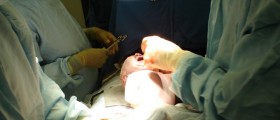
Breech babies are turned in a few different ways, but an external cephalic version is the most effective and scientific of these. What does an ECV involve, and how do you decide whether you should have one or not? If your baby is breech and you have decided that you would like to try an external cephalic version, this is generally performed in the 36th or 37th week of your pregnancy, before labor starts. But babies can go through a successful version, only to turn back to breech position. The longer before your estimated due date your ECV takes place, the more chance you baby potentially has to move back to a butt or feet down position.
Sometimes, you have the option of carrying out an external cephalic version during labor, before your bag of waters break. The advantage of this is that your baby would not have the change to change positions anymore. But ECVs during labor are not done too often, because of perceived risks. The procedure itself is preceded by electronic fetal monitoring, and an ultrasound this is done so that your doctor can determine your baby's exact position, the amount of amniotic fluid, and heart rate. Fetal monitoring will continue throughout the procedure, so that it can be stopped as soon as your baby shown signs of distress.
The doctor carrying out the version will attempt to manually turn your baby by guiding and pushing them down, slowly. You may be given an injection to prevent uterine contractions and the onset of labor, which might otherwise be caused by the procedure. Some women find a version extremely uncomfortable and even painful, while others don't report any pain. Some women can deliver vaginally with a breech baby, but finding healthcare providers that will attend breech births is more and more difficult.
















Your thoughts on this
Loading...